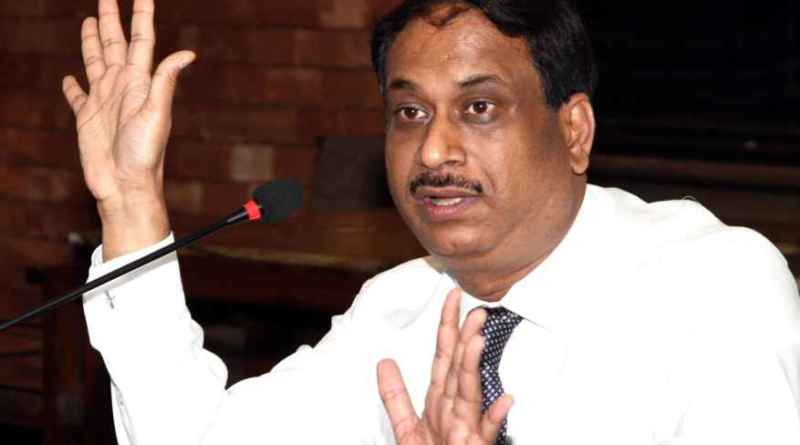Frequent urination might be a sign of Prostate Disease!
Ambar Bhattacharya, abptakmaa, Kolkata, 31st Aug 2019 : Prostatic diseases are common among aging men causing significant morbidity. Most chalk-up the problem of the prostate to the current circumstances, some blame aging, weather change, travel-related stress, the water of different places, etc. However, due to the sedentary lifestyle, the age factor is blurring the line. The quality of life gets hampered as the prostate enlargement can cause “lower urinary tract symptoms.” Benign Prostatic Hyperplasia (BPH) is defined by at least microscopic excessive growth, which over a period, translates into the gross enlargement of the gland visible to the naked eye. It begins before 30 years and approximately 8% of men at least microscopic BPH by 40 years, 50% by 60 years and 90% by 90 years of age. The prevalence of BPH range from 14% to 30% for men aged 50 or older, depending on the definition used. While BPH prevalence in India is by 25% for 40–49; 37% for 50–59; 37% for 60–69; 50% for 70–79. Approximately 2 out of every 5 Indian men have bothersome lower urinary tract symptoms due to BPH. However, most will not present to a doctor and seek treatment, as many will normalize it, linking it with aging, the weather, travel-related to stress, change in water, etc. They will cope with the bother of the disease until it becomes too severe and causes all sorts of complications.

| Symptoms: Urge to urinate often Feeling that the bladder is full, even right after urinating Feeling that urinating, ‘can’t wait.’ Weak urine flow Dribbling of urine The need to stop and start urinating several times Trouble starting to urinate The need to push or strain to urinate At least 1 to 2 might have the below comorbidities: Diabetes Hypertension |
The prostate goes through two main growth period with age. The first occurs early in puberty when the prostate doubles in size. The second phase of growth begins around age 25 and continues during most of a man’s life. BPH often occurs with the second growth phase. Patients with BPH commonly complain of frequent urination at night, difficulty in passing urine, incomplete emptying of the bladder. The quality of life gets hampered as the prostate enlargement can cause “lower urinary tract symptoms”. To cope with these symptoms, the patient starts restricting water and other fluid intake and being conscious of his urination, for example, being on the look-out of toilet location wherever he goes, urinating before going on long trips outdoors, where he might not have access to loos such as on a long-distance bus journey. These coping strategies further restrict the patient’s quality of life.
It is also important to note that the size of the prostate doesn’t necessarily determine the severity of your symptoms. Some men with slightly enlarged prostates can have significant symptoms, while other men with enlarged prostates can have minor urinary symptoms. And if left untreated, the urinary problems might lead to obstruction of the urinary tract and affect prostate health. It is critical to consult your doctor and not shy away from the issue. Your doctor can help you choose the best care based on your age, health, and how the condition affects you. Also, important to note is the fact that the symptoms of BPH are like those produced by more lethal diseases, such as prostate cancer. Therefore, it is vital to visit a doctor or specialist to understand what and how severe the actual problem is.
Adding to this Dr. Amit Kumar Agarwal, highlights that, “It revolves around the home, the office and places nearby the home. During a weekday, apart from commuting to and from office, there seems to be less movement to other places. Weekends are limited to the home or places near the home. While they do not articulate it, their behaviour reveals that they protect themselves by not straying too far and always remaining accessible to a bathroom. This is especially true for patients who are not being treated. Those who are treated also have a similar lifestyle but are more open and confident to move out of this perimeter should the need arise”.
Diagnosis of BPH is made by a mixture of physical, radiographic examinations and a few lab tests. Physical examination includes DRE (digital rectal examination), which involves a physical examination of prostate by a Urologist. Abdominal and pelvic ultrasound also indicates the size of the prostate gland. Lab tests include PSA (Prostate-specific antigen). PSA is a protein that is made only by the prostate. When the prostate is healthy, very little PSA is found in the blood.
According to Dr. Amit Kumar Agarwal “Patients are largely unaware of this condition despite high prevalence rates as they consider it a normal part of aging, which can be rectified through a targeted patient awareness campaign. BPH is diagnosed through a combination of methods including patient history, IPSS scorecard, ultrasound, and PSA tests”.
Dr. Amit Kumar Agarwal further added that “Most realized there was a problem when the frequency of washroom visits increased seemingly sudden and quick onset – not a gradual increase. This is how it started for most, described as the first symptom”.
BPH management involves management of symptoms through medications like Alpha-blockers, most commonly tamsulosin. BPH symptoms are measured by using IPSS (International Prostate symptom Score). If symptoms are uncontrolled, a combination treatment is offered. Surgical removal of prostatic tissue is the last step if symptoms are uncontrolled on medication. Since alpha-blockers are chronic treatments, there are different molecules available with alpha-blockers for comorbid patients, sexually active patients, and the general population. BPH symptoms are usually neglected until they become very bothersome, which should not be the case.
Prostate health month, observed in the month of September, is a movement to create awareness of men’s health. Intending to provide easily accessible prostate health www.whatarelief.in is a digital asset created for patient awareness and education. Publicity : Launcherz. Photography : Ashok Sarkar



